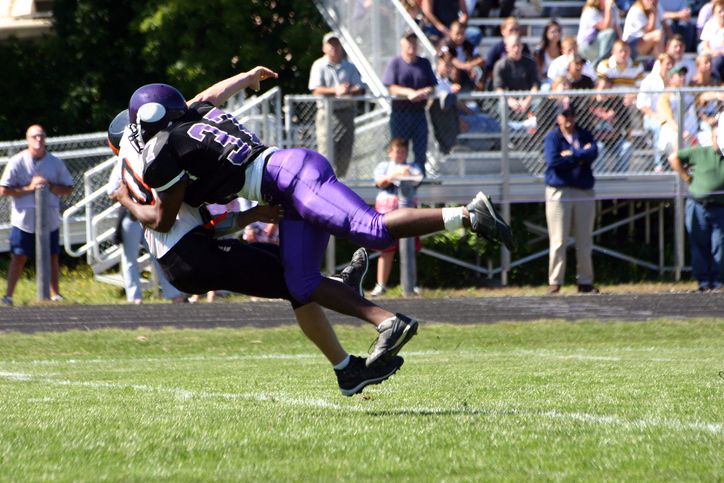Sports Medicine
Want to learn more about this at Kettering Health?
Fall sports are around the corner. And while they’re a great way for students to get exercise and make friends, they also increase chances for injuries such as concussions.
Dr. Kali Hollingsworth, a primary care physician specializing in sports medicine, explains what causes concussions, how to avoid them, and how to safely return to the field if they do happen.
What is a concussion?
Most people think concussions are bruising to the brain, but this isn’t true.
“It’s more of a stretching or irritation of the nerve endings in your brain,” says Dr. Hollingsworth.
Concussions can happen from direct hits or indirect forces. According to Dr. Hollingsworth, any force that causes your brain to shift significantly inside the skull can cause a concussion.
Nerve endings in the brain control most brain and body functions, which is why concussions can have a wide range of symptoms.
Symptoms
Some people with a concussion may have only a headache, while others may experience more extreme symptoms.
Possible symptoms include
- A persistent and worsening headache
- Blurry or double vision
- Confusion and brain fog
- Irritability or mood swings
- Changes in sleep patterns (suddenly sleeping too much or not enough)
More serious symptoms include vomiting, slurred speech, and balance problems.
Dr. Hollingsworth points out that you don’t need to lose consciousness to have a concussion. However, doing so is cause for concern.
“If there’s any injury that involves a loss of consciousness, you definitely need to be evaluated sooner rather than later.”
Getting back to the field
According to Dr. Hollingsworth, treatment for concussions is “relative rest.” This means incorporating light exercise daily in between periods of rest. This treatment has been shown to speed up the healing process as opposed to absolute rest.
Dr. Hollingsworth recommends any exercise that mildly elevates one’s heart rate, “as long as it’s not causing an increase in symptoms.”
Ensuring an athlete has recovered before returning to their sport is vital. Returning to full contact too early can result in second-impact syndrome, which can cause seizures and may be fatal in some.
Because of this, athletic trainers and sports medicine specialists like Dr. Hollingsworth work closely with athletes to ensure it’s safe for them to return to the field. A five-day return-to-play protocol is used as athletes increase their activity each day, as long as they remain symptom-free. Athletes must be symptom-free for a full 24 hours before easing back into their sport.
Dr. Hollingsworth stresses the importance of not only wearing proper safety equipment on the field but also using proper techniques and mechanics to avoid direct hits as best as possible.










